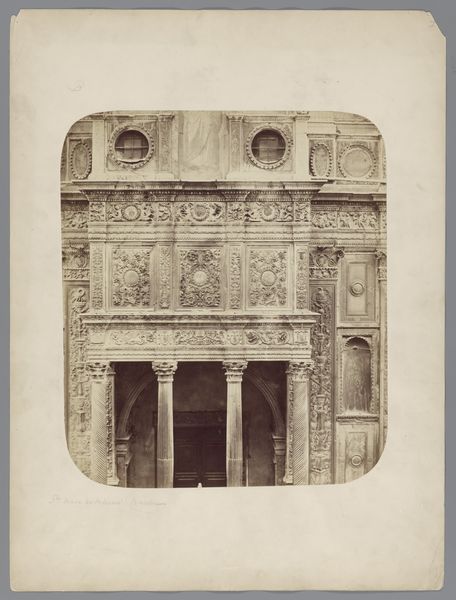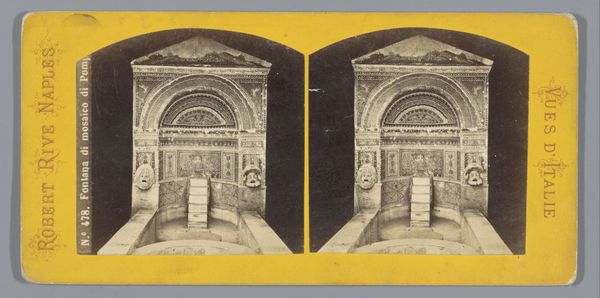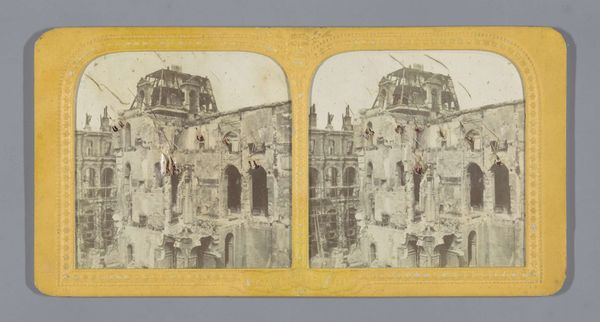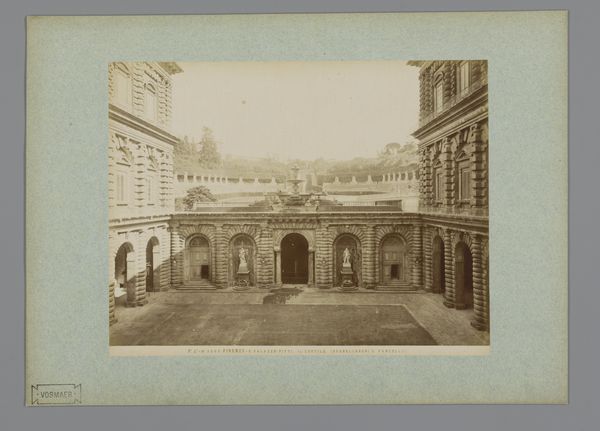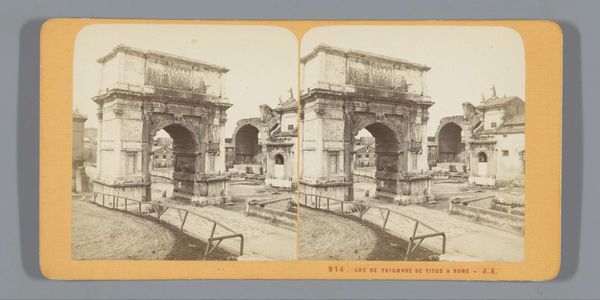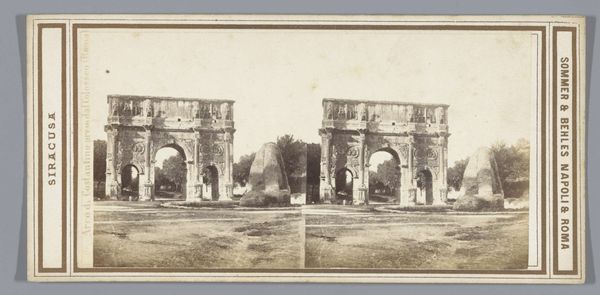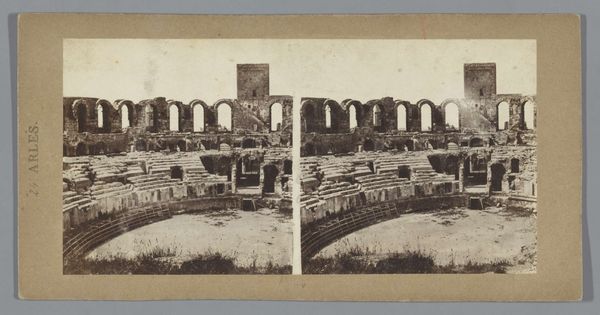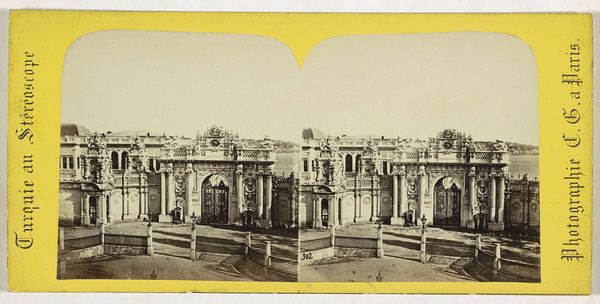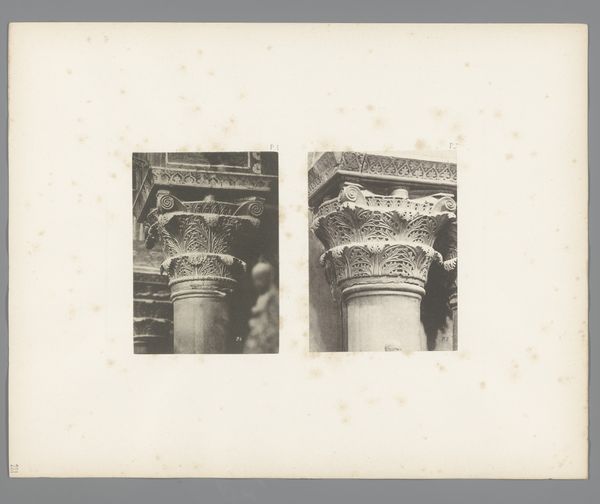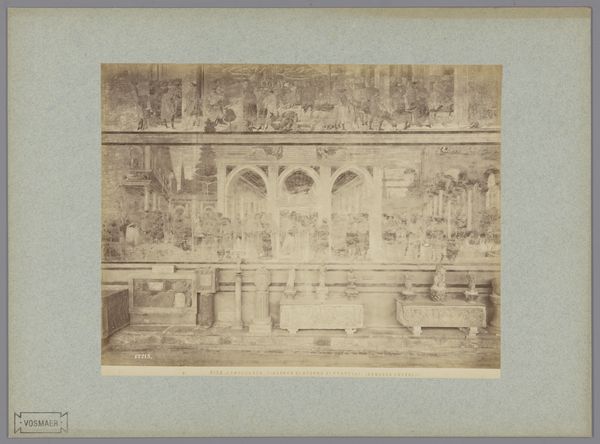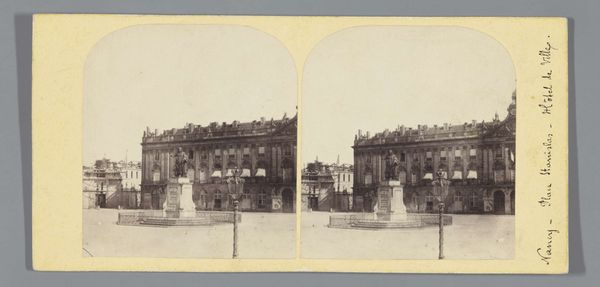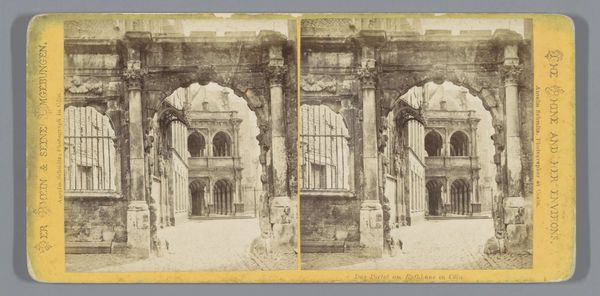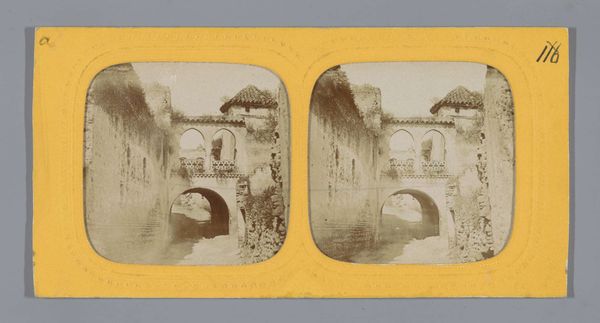
Gezicht op de Arco trionfale del Castel Nuovo in Napels c. 1860 - 1880
0:00
0:00
print, photography, albumen-print
# print
#
photography
#
ancient-mediterranean
#
cityscape
#
albumen-print
#
realism
Dimensions: height 87 mm, width 177 mm
Copyright: Rijks Museum: Open Domain
Curator: Giorgio Sommer produced this albumen print sometime between 1860 and 1880. Titled “View of the Triumphal Arch of the Castel Nuovo in Naples," it’s currently held here at the Rijksmuseum. Editor: It hits me as…stark, somehow. The light is muted, and this imposing structure feels almost ghostly against…nothing, really. No bustling street scene, just the monument and its formidable stone presence. Gives you this slightly uneasy feeling of timelessness, a beautiful melancholy. Curator: It’s interesting you say that. Sommer was working in an Italy undergoing immense social and political transformation during the Risorgimento. Photography, in this sense, served not only to document architectural grandeur but also to freeze a specific moment amidst great change. Editor: Change is definitely one way to put it. I see resilience in this fortress. Like it's silently witnessing the shifting tides of history, and continues to hold the memory of resilience through architecture. Do you feel that photography as medium does justice to what seems like a massive imposing place? Curator: I would say that it does justice to this particular part. This arch, acting as the entrance of the Castel Nuovo, was originally constructed in the 15th century under Aragonese rule. So its purpose and subsequent symbol meant asserting power and signifying royal authority during that particular historical moment. Sommer captured the triumphal structure in a time when such authorities are being questioned across Europe, offering perhaps another symbolic view on the impact of time in societies. Editor: Exactly! I guess what is intriguing me is the sense of defiance the triumphal arch emits despite what would probably have been societal shifts at the time, as you say, but in Naples it continues standing almost timeless. As an image, it lacks human life… Perhaps a bit too romantic or staged in that sense for me. Curator: True, and this ties into questions around Realism in art as an accurate form. Its power perhaps lies in presenting architecture devoid of context that highlights power, but at a key period that questioned old authority. The image opens so many narratives! Editor: It truly does. Sommer's framing certainly gives much food for thought; it will leave us pondering well after leaving this audio guide.
Comments
No comments
Be the first to comment and join the conversation on the ultimate creative platform.
